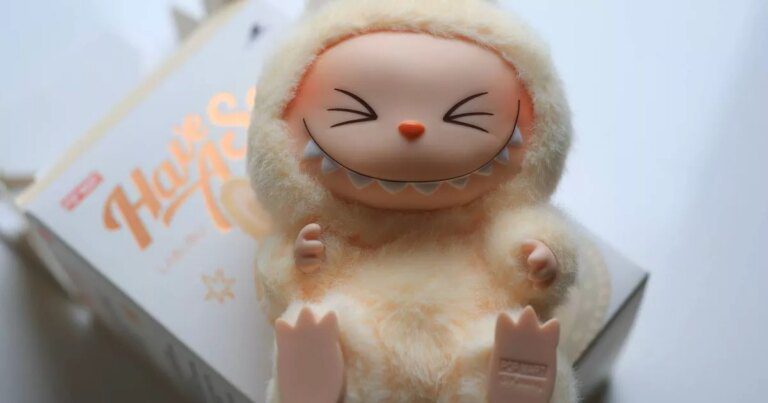The UK Intellectual Property Office (IPO) has launched a ‘Fake Toys, Real Harm’ campaign
Parents are being urged to exercise caution when buying Labubus, as the viral plushie craze continues. The official bag charms are selling like hotcakes and can be difficult to find, not to mention they come with a hefty price tag.
This high demand has led to a surge in counterfeit Labubus, often referred to as ‘Lafufus’, entering the market, particularly in the run-up to Christmas. However, these cheaper alternatives can carry serious risks.
So far this year, a staggering 259,000 fake toys, worth over £3.5 million, have been intercepted at UK borders. Of these seized items, 90 per cent were counterfeit Labubu dolls, reflecting the ongoing popularity of this trend.
Alarmingly, these fakes can differ from the originals in more dangerous ways than just appearance. A worrying 75 per cent of seized counterfeit toys failed safety tests due to the presence of banned chemicals and choking hazards, while 46 per cent of purchasers reported serious safety issues.
The Intellectual Property Office (IPO) discovered that some counterfeit toys contained banned chemicals linked to cancer, as well as dangerous choking hazards and other alarming risks, even in toys marketed towards toddlers and babies, reports the Mirror.
The same research found that whilst 92 per cent of toy purchasers across the UK recognise counterfeit products exist, cost considerations currently outweigh safety concerns in this area.
The study revealed that seven in ten toy buyers put price first, whilst 43 per cent will purchase items simply because children ask for them. Other key factors influencing purchasing decisions include quality (48 per cent) and brand recognition (46 per cent).
Yet when it comes to safety, merely 27 per cent of shoppers consider this as a decisive factor.
Safety considerations, however, rank much lower amongst consumers: only 27 per cent of toy purchasers mention this as something that affects their choice. Given this finding, specialists are eager to emphasise the genuine dangers of what might appear to be a harmless buy.
As the IPO launches its ‘Fake Toys, Real Harm’ initiative, working alongside toy shops, local councils and social media personalities, deputy director of enforcement, Helen Barnham said: “With counterfeit toys, what you see is rarely what you get. Behind the packaging can be hidden choking hazards, toxic chemicals and faulty parts that put children in real danger.
“These products have bypassed every safety check the law requires, which is why we’re working with our partners to keep these dangerous fakes out of UK homes. Our ‘Fake Toys, Real Harm’ campaign aims to raise awareness among parents and present buyers of the hidden harms associated with counterfeits. Child safety must come first, so we’re urging parents – please don’t let your child be the tester.”
Parenting influencer, Budgeting Mum, stated: “As a parent, you just want the peace of mind that the toys you buy are safe for your children. What looks like a bargain can turn out to be something unsafe or even dangerous.
“With so many people buying toys online now, it can be even harder to spot the fakes. You can’t hold the toy in your hands or check the packaging properly. That’s why this campaign matters: it gives parents like me the confidence to know what to look for, so we can protect our kids.”
How to avoid purchasing counterfeit toys
Stick with reputable retailers or official brand websites and be wary of third-party sellers on online marketplaces.
Examine reviews thoroughly, ensuring you look beyond five-star ratings and consider any negative feedback.
If pricing seems “too good to be true”, it probably is. Fake items are typically much cheaper than genuine products.
Research both the brand and product name to verify the toy hasn’t been subject to a recall.
Upon delivery: Ensure the packaging displays a UKCA or CE safety mark and a UK or EU contact address.
Verify that the packaging looks professional and includes age warnings.
Examine the toy to ensure there are no loose small parts, stuffing, or unsecured batteries.
If you discover you have a counterfeit or unsafe toy:
Do not give this to your child and return it straight away.
Alert other parents by leaving a review.
Report the seller to the platform you purchased from.
Contact Trading Standards to help stop dangerous toys from reaching other families.


